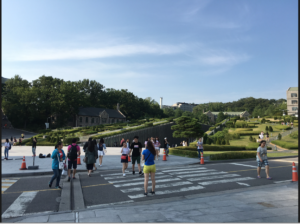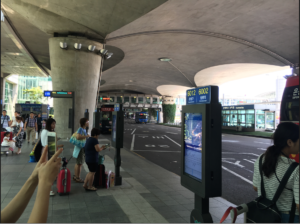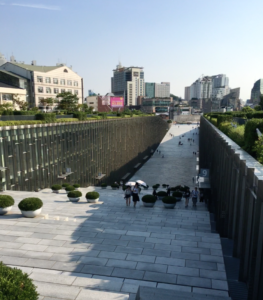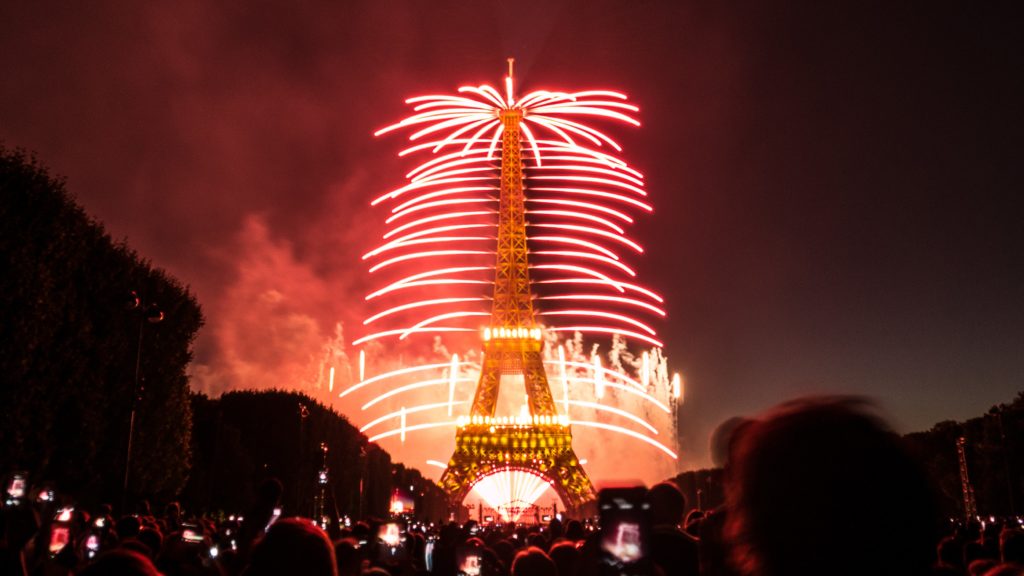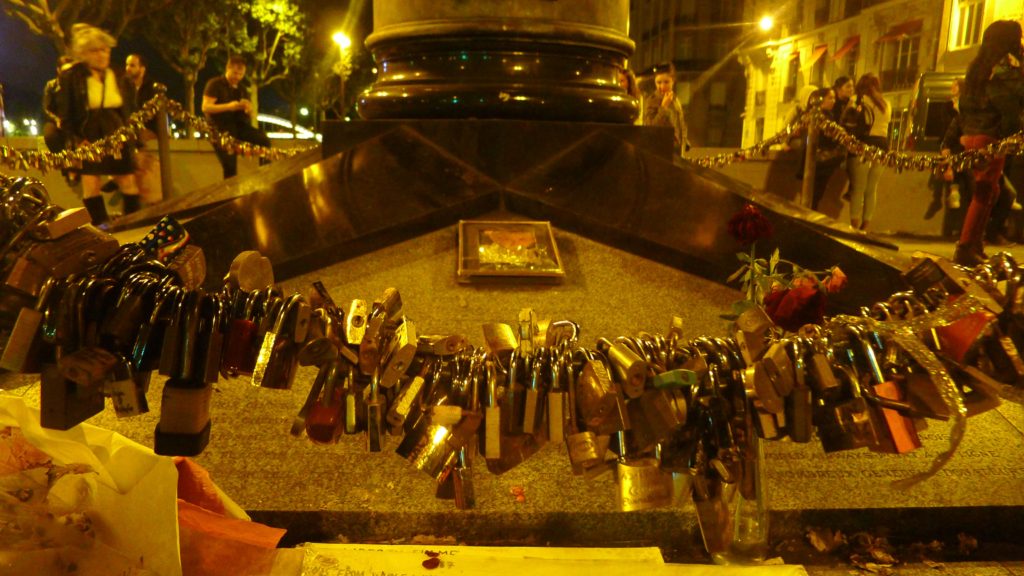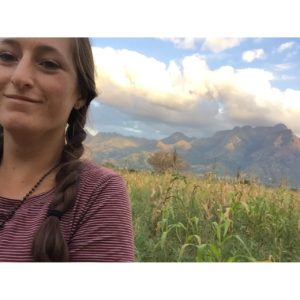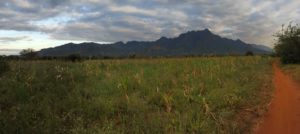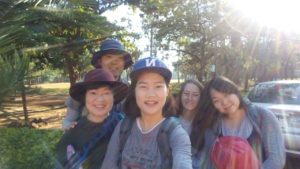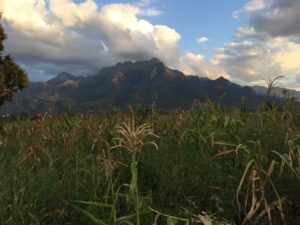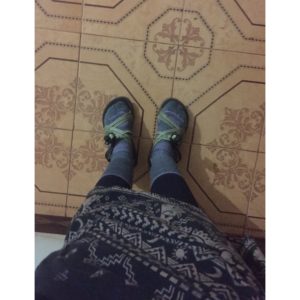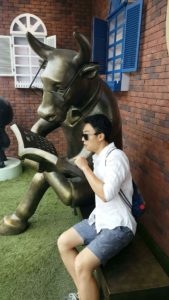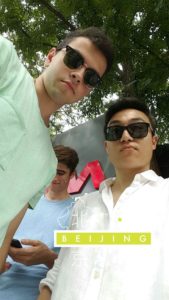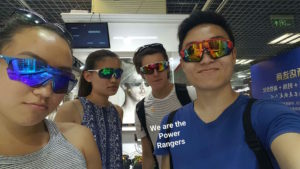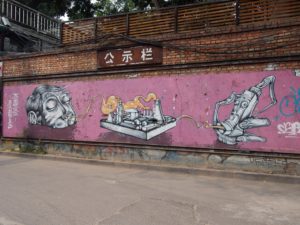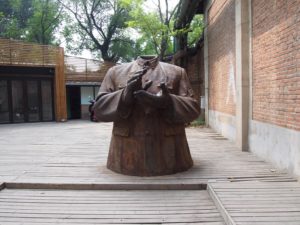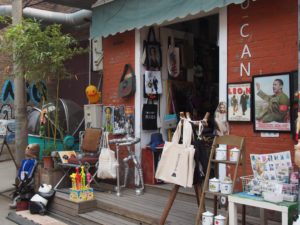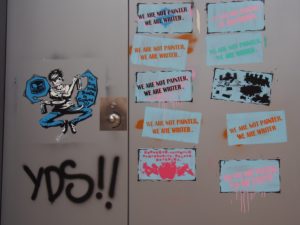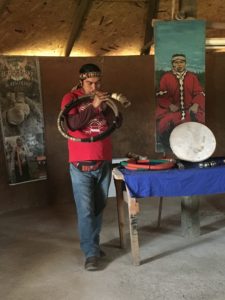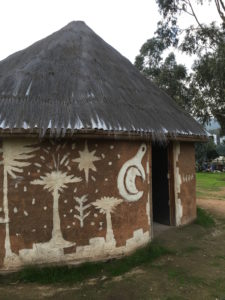I’m sorry about my blog posts being late, but between finals and travels, the past weeks have been crazy.
My last week in Argentina, I had my written and oral finals, but I also wanted to check off my list the things I hadn’t done yet. Therefore, I went to the Museo de las Bellas Artes, where I saw the works of famous artists like Orozco, Siqueiros, and Rivera, among others. The same day, I walked to La Flor, a giant metal sculpture of a flower, and waited about an hour in the cold until sunset to see its petals close. It was worth it.

The petals open every morning at 8a.m. and close at sunset
My last night in Argentina (at least what I thought would be my last night), my roommates and I went out to celebrate being done with classes and passing our exams.
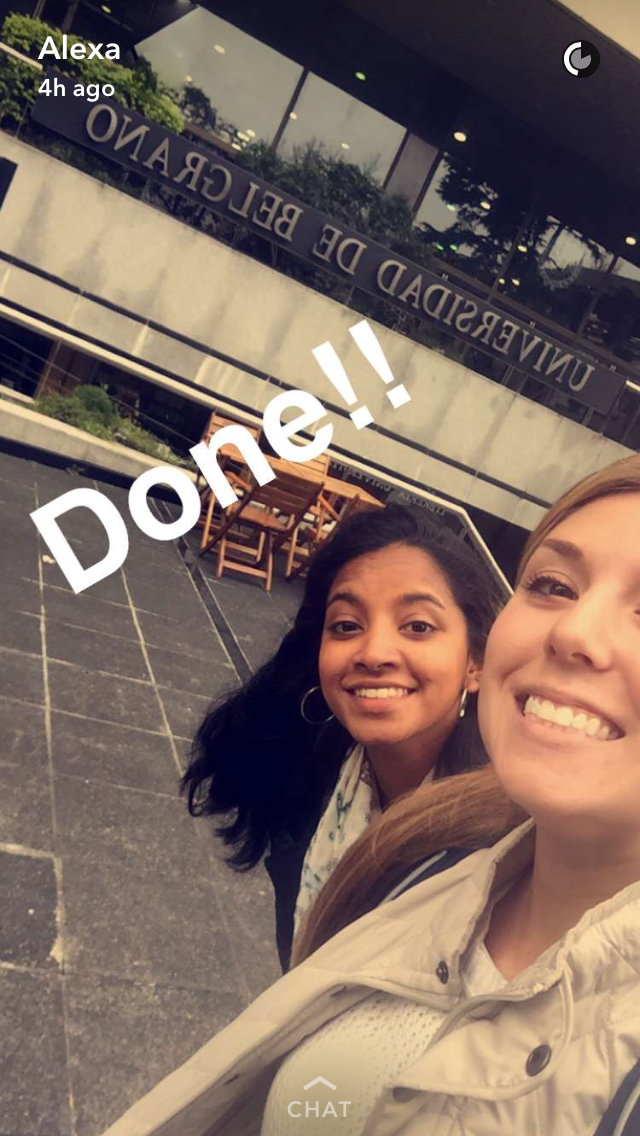
Last selfie in front of La Universidad de Belgrano
We met up with some friends that we had met two weeks earlier, and I was told that my Spanish had considerably improved; I now understood them better and I was more easily understood. That night, I also went to a boliche (nightclub) with them, because I wanted to try it out. It was confirmed that I like Latino music and dancing.
The next day, we packed and went to our favourite bakery to get a few empanadas for lunch and some cookies and pastries for the road. We said goodbye to the workers there, and it was kind of emotional. We had been to this bakery everyday for weeks. We were for sure going to miss them (and the food), and they would miss us too (and the business we brought a.k.a every international student at the university). They wished us safe travels and good luck.
As we rode to the airport that day, I looked outside the window knowing I would miss this place. Despite the cold, the dog poop everywhere, the crazy drivers and the weird shoes, I had loved my stay in Argentina, the people, the food and especially the language.

Just more proof I was actually there
As I waited in the airport lounge that day, I learned that my flight was delayed 30 minutes. “That’s okay,” I thought to myself. That okay-feeling was replaced by anger, exasperation, tiredness and desperation, when five hours later, at 2a.m., they cancelled the flight and told us that the next one was not until 8.45p.m. the next day. I guess Argentina did not want to let go of me. The airline booked us a hotel right in the city centre for the night and offered us meals. Although it was stressful, I made it back safely to the US a bunch of hours later after missing two different connections. The thing is, airports can be really boring but they’re also cool places to meet really interesting people. I met a man from Bath, UK who works for a translation company and gave me good advice on a potential career path. I also met a couple from Argentina who needed help communicating with their friend who was supposed to pick them up in the US. So, as they talked to me in Spanish, I texted their friend in English. Fortunately, I was not alone during my airport adventures. A girl I had met earlier in the program was also there, and we travelled together all the way to Houston and became good friends.
From start to finish, this trip has been incredible! I learnt a lot about the country, but also about myself (travelling alone does that). I’d really love to be able to go back for the people, the history, the culture, the food, and the snapchat geofilters.
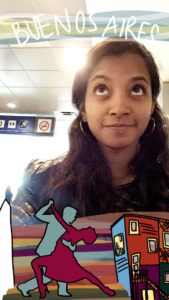
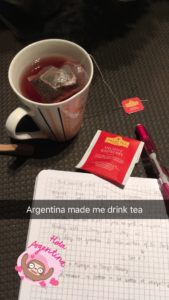
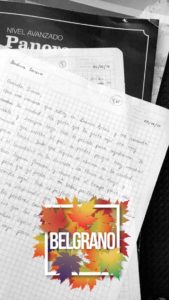

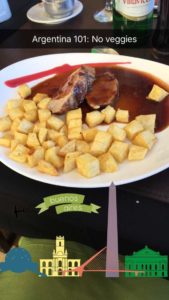
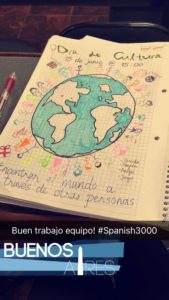
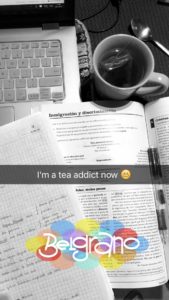

I hope you like my collection, and thanks for reading about my adventures. If you’re considering the SLA program or going on a similar trip, I would 10 out of 10 recommend it!
¡Adiós amigos!
